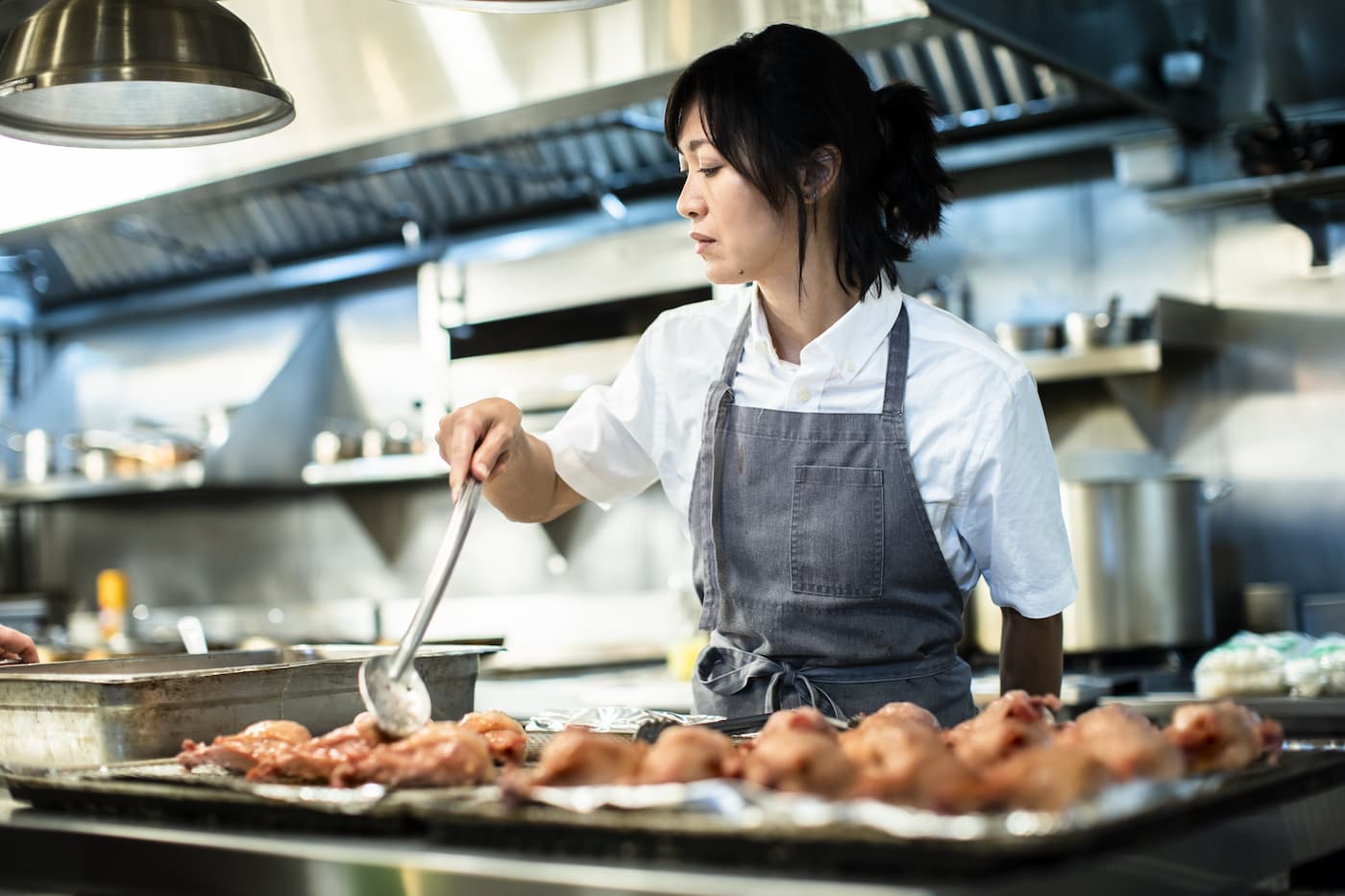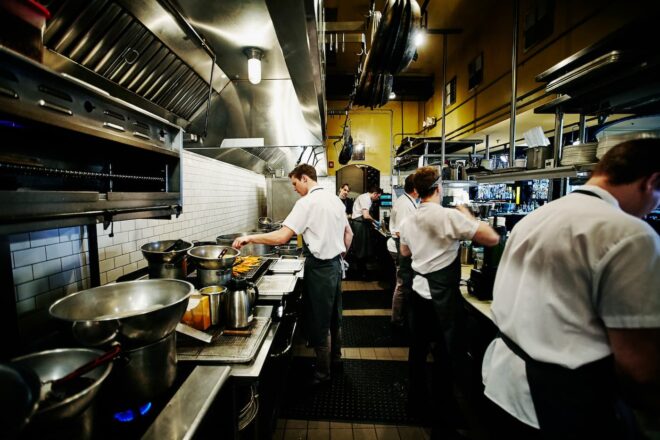How to open a restaurant
Editorial Team
6 min read
There were 1 million-plus restaurants in the United States in 2021. If you’re looking to join those ranks, you’ll need a plan, lots of expert advice, and patience galore. However, once you get everything in order, you can be a part of one of the most fun, rewarding, and exciting industries on the planet. So, what do you need to open a restaurant? Keep reading to find out.
Tips for starting a restaurant
The first steps for starting a business include lots of research, writing your business plan, and consulting with experts. You may be the one opening a restaurant right now, but there are dozens of other entrepreneurs who have gone through the same process, and their advice and guidance could be invaluable.
There are a lot of fundamental details that need to be ticked off your to-do list. Many of those items have to do with paperwork. For instance, you may need to register your business with the city and/or state so you can pay taxes, open the proper bank accounts, and set up your internal payment processing systems.
Create a concept/brand for your restaurant
Creating a concept is one of the most important aspects of opening a restaurant. The concept you decide on now will influence everything from your menu to your décor to your marketing campaigns for years to come. A concept could include everything from the cuisine, the dining experience, or the type of service you offer.
When brainstorming your concepts and brand, remember that you’ll also be selecting the menu items that you’ll eventually offer, the restaurant’s style and decor, and the overall price point of dishes.
Ask yourself the following:
- What type of service do you want to provide?
- Is this a sit-down-only restaurant or will you offer on-the-go options such as curbside pickup?
- Do you have a passion for the concepts you’re considering?
The answers to these questions will help impact how the restaurant runs operationally, what the required staffing will be, and what technology is needed.
Acquire licenses & permits
Opening a restaurant requires a variety of licenses and permits before you can serve the public. However, the exact type of licenses and permits you’ll need depends on factors including local regulations, the type of restaurant you’re opening, and the specific services you intend to provide.
Every restaurant needs a license to sell food, but you’ll also need additional permits if you want to sell alcohol, provide entertainment, have your own dumpster for refuse, etc. You’ll be required to meet restaurant-specific health and safety requirements and undergo inspections before you have permission to open.
Select a location
Location is one of the most vital things to consider when opening a restaurant.
When you’re thinking about how to find a good location for your business, consider these factors:
- Is the area well populated?
- Is it in a prime traffic location?
- Is there parking?
- How is the foot traffic?
Some entrepreneurs choose to open a pop-up location or a food truck before signing a lease on a permanent dining room. These options can help you test out a particular neighborhood or street to make sure there are plenty of hungry customers around.
Once you’ve chosen the perfect spot, it’s time to design a restaurant floor plan. A floor plan helps you manage demand during breakfast, lunch, and dinner rushes, and helps provide customer satisfaction and operational efficiency of the restaurant itself.
Create a menu
Your menu should reflect your concept and offer guests plenty of variety without overtaxing your back-of-house staff. Break down your menu into segments so it’s easy to scan. You can divide items according to categories such as appetizers, soups and salads, and entrees, or organize them by protein or style.
Consider placing your most profitable items in the center of the menu. You can use a call-out box or other graphic details to highlight these items even further and hopefully boost sales. If your concept relies heavily on a certain category, such as handcrafted cocktails or desserts, consider printing those on a separate menu.
Connect with suppliers and acquire materials and equipment
A big part of opening a small restaurant is connecting with the suppliers who will deliver a steady stream of ingredients and other must-have items integral to maintaining service and a high standard of quality. This starts with the equipment you need to set up your kitchen and continues with weekly deliveries of produce, meat, dry goods, cleaning supplies, etc.
The better your relationships with your B2B suppliers, the more likely you’ll be to get good deals and top-notch service. Ask for referrals from friends who are already in the business, look at reviews before choosing who you’ll do business with, and try to establish a relationship with a single sales agent or account rep.
Choose a POS system and get ready to accept payments
Knowing what to look for in a POS system can help make the difference between streamlined, efficient operations and a restaurant that’s constantly navigating operational hurdles. Many successful restaurants are now using POS systems that offer a breadth of payment functionality, including:
- Traditional methods
- Contactless options
- QR code payments
- Mobile payments
- Online ordering
Set up your restaurant POS with as many payment options as possible to help attract new customers and keep them returning.
Hire staff and prepare for your grand opening
Hiring employees is only part of the equation when you’re staffing your new restaurant. You’ll also need to determine how you want to run things on a day-to-day basis, such as:
- Setting up rotating schedules so employees work a variety of days and times (better for shift and pay equity)
- Structuring your pay policies to include industry standards, such as the 80/20 tip rule
- Choosing the right software to help oversee employee management, measure performance, create incentives, etc.
Manage and optimize your business
Opening your restaurant is a stepping-stone in the path to business success. You’ll need to ensure everything operates smoothly and efficiently from here on out. Over the course of your restaurant’s lifespan, you’ll likely invest a lot of time and patience in training staff, optimizing operations, and using technology that scales with your business. For instance, a reliable business tracking & reporting solution can help you get a handle on what’s working, what isn’t, and how you can make improvements.
Run a better restaurant with Clover
Learning how to open a restaurant before you start planning can help make it easier to strategize and increase the likelihood that you’ll launch a successful and popular eatery. For more information on how Clover can address your unique business needs, reach out to a Clover Business Consultant today.
CONTACT SALESThis information is provided for informational purposes only and should not be construed as legal, financial, or tax advice. Readers should contact their attorneys, financial advisors, or tax professionals to obtain advice with respect to any particular matter.
Related Posts
What is a business license and why do you need one?
Full Service Restaurants (FSR)
Simple restaurant kitchen layout ideas that optimize back of house operations
Popular Topics
Stay In Touch
Sign up and learn more about Clover.
Thank you for your subscription!
Recent Stories
- Jewelry store supplies and equipment needed for opening day
- How small businesses can use employee discounts to retain staff
- Tips and tricks for opening an outdoor pop-up restaurant
Please share your contact information
to access our premium content.
Thank you for sharing your contact information.
Download Now





